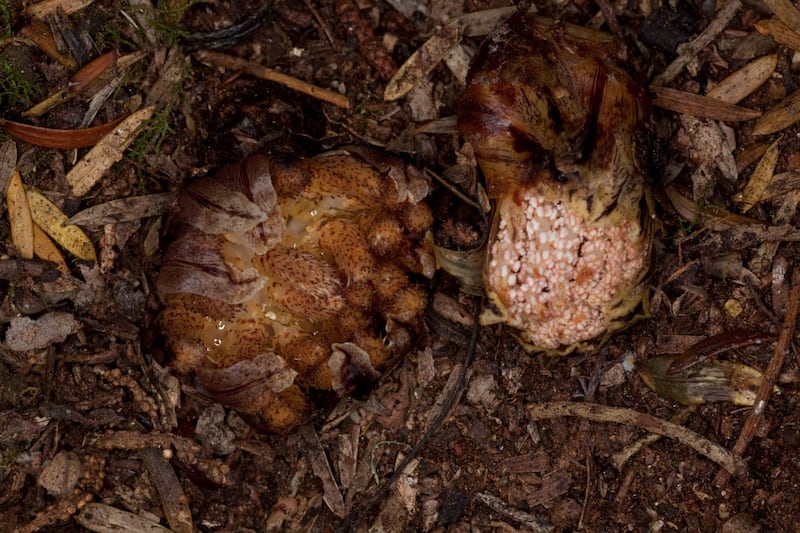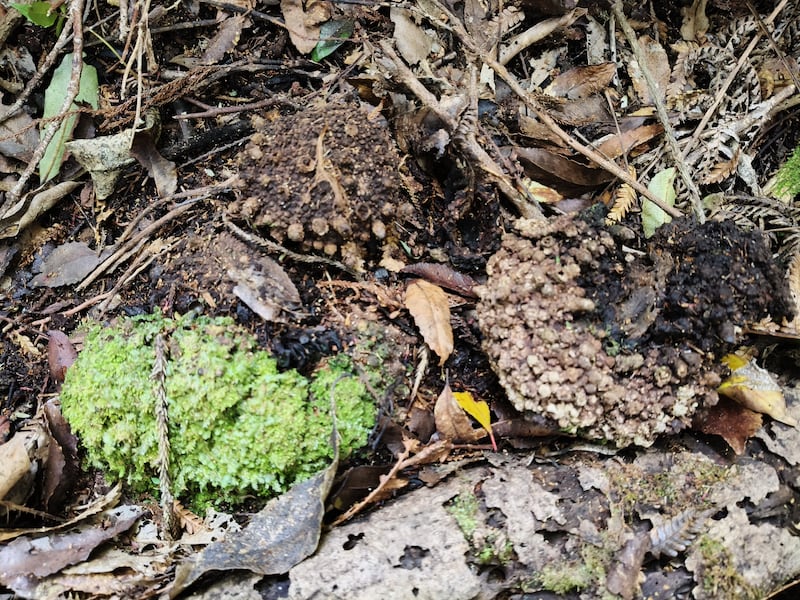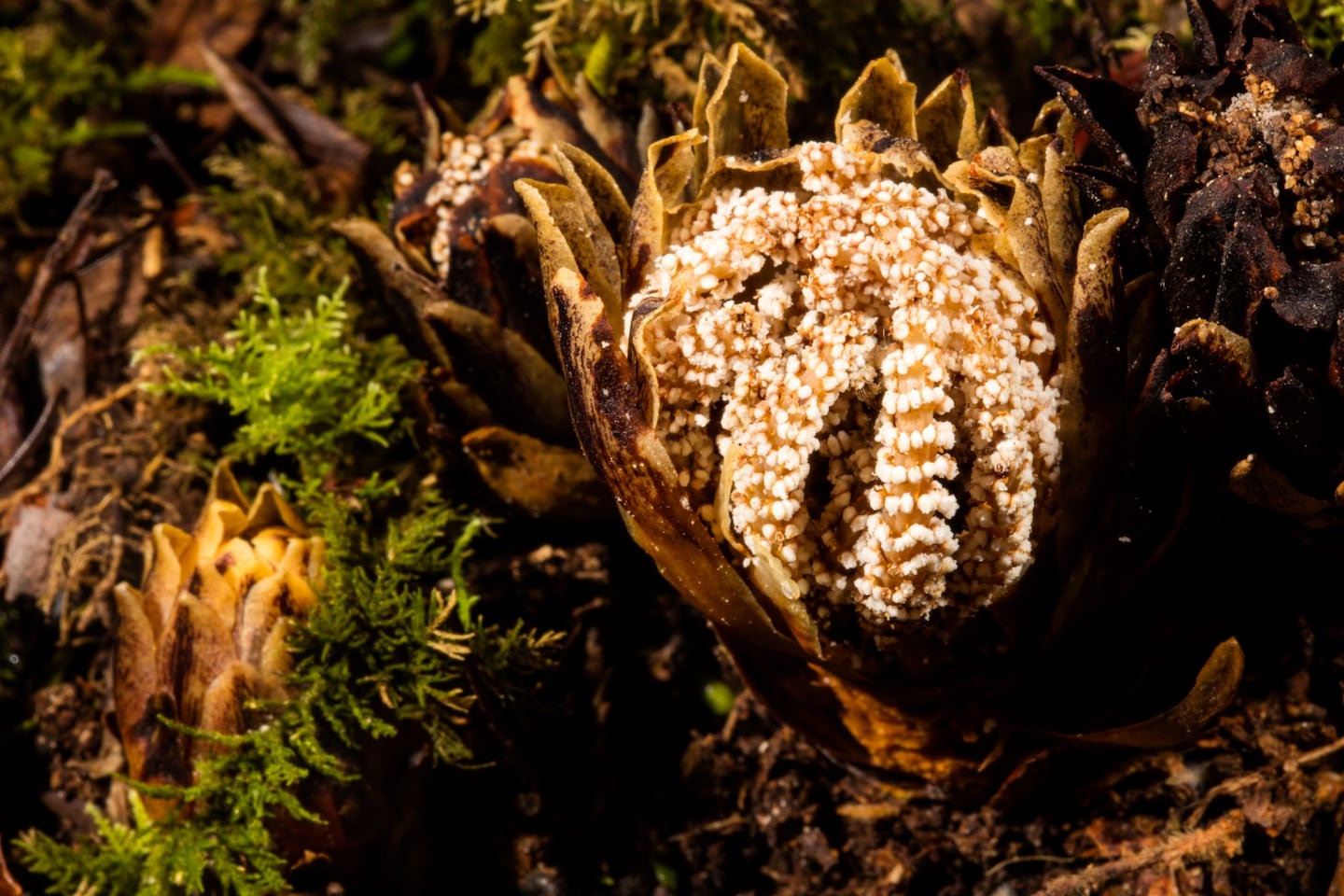Te Pua o te Rēinga was rediscovered after wild populations of the species were thought to have been extinct in the region for more than a century.
This is the only parasitic plant endemic to Aotearoa and was found in the Wainuiōmata water collection area. While it is described as parasitic, in te ao Māori, the plant has a whāngai relationship with the forest around it.
Also known as Wood Rose or Dactylanthus taylorii, Te Pua o te Rēinga is considered regionally critically threatened.
Although Te Pua o te Rēinga seeds from King Country were translocated to the Wellington region in 2020, the last documented observation of a wild population was in 1914 in the Kaitoke area.
Rōpū Tiaki is a co-governance group made up of Taranaki Whānui and Greater Wellington representatives for the management of the Parangarahu Lakes area, which is in the process of extending to Wainuiomata Regional Park.
Co-chair of Rōpū Tiaku and Greater Wellington ecosystems and community manager, David Boone, said a bird specialist stumbled across the plant in an area closed off to the public.

“In a remarkable and unexpected discovery, our contractor spotted the plants close to a bird count station we have been surveying annually for the last two decades,” Boone said.
“The plants were not found in a healthy condition – more like relics of a remnant population – further monitoring is needed to understand the size and health of the population, and what we can do to preserve it."
Co-management plan to translocate the seeds
The group that translocated Te Pua o te Rēinga seeds to Zealandia and Ōtari-Wilton’s Bush in 2020 has reconvened to co-develop a management plan for the re-discovered wild population, alongside Greater Wellington, Wellington City Council, and DOC. It includes representatives from the region’s six iwi: Rangitāne o Wairarapa, Ngāti Kahungunu, Taranaki Whānui, Ngāti Toa Rangatira, Te Āti Awa ki Whakarongotai, and Raukawa.
Rangitāne o Wairarapa Pou Rautaki Whenua Amber Craig, a member of the working group, emphasises the significance of Te Pua o te Rēinga in te ao Māori and the discovery of the collection of rākau.
“This rediscovery is very exciting for us as a collective mana whenua rōpū,” Craig says.
“Leading this project with mātauranga Māori, in collaboration with Greater Wellington, Department of Conservation, and communities, will ensure that we can not only protect Te Pua o te Rēinga but ensure they thrive.
“Preserving the whakapapa of these plants is important, and we can only do that by listening to our pūrākau, looking at the intrinsic relationships Te Pua o te Rēinga has with other species, and working together holistically to support the entire ecosystem.”
The Wainuiōmata forest
The Wainuiōmata water collection area is a Key Native Ecosystem site due to its high natural values and vulnerability to predators, and would become part of the proposed Puketahā eco-sanctuary.
Boone described the forest in the Wainuiōmata water collection area as being largely unchanged since Europeans arrived in New Zealand.

“Includes the largest and most pristine lowland forest in the lower North Island. It is a habitat for native bird species like tītipounamu (rifleman) and kiwi, and now one of New Zealand’s rarest plants.”
Department of Conservation operations manager and an expert on Te Pua o te Rēinga, Avi Holzapfel, said this is the southernmost known population of the plant in Aotearoa New Zealand.
In 2024, there was a new population of central lesser short-tailed bats found during monitoring of the nearby Pākuratahi River.
Before this, the only short-tailed bats known to the regional council were in the Tararua range and northern Wairarapa - both of which had not been seen in recent years.
Short-tailed bats, Pekapeka, are a known pollinator of Te Pua o te Rēinga.
“As short-tailed bats can range over 40km during a single night’s feeding, it is quite possible that bats have visited, fed on, and pollinated the newly discovered population in the past, and hopefully will do so again,” Holzapfel adds.
Where to from here?
The next steps include protecting the site, conducting a broader survey of the surrounding area, and identifying any additional plant individuals.
Educational resources for the Greater Wellington field staff and knowledge exchange with iwi and national experts are underway.
Pest control efforts in the area are managed under the Greater Wellington Key Native Ecosystems programme.




